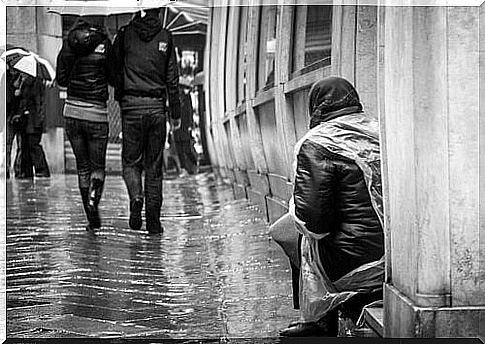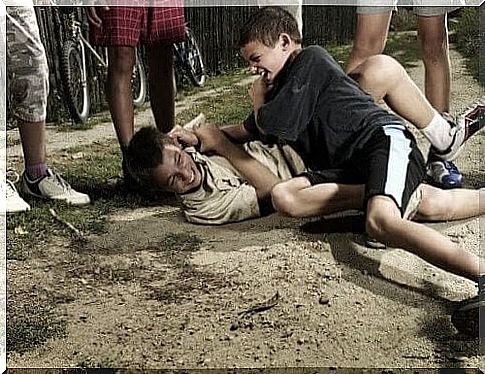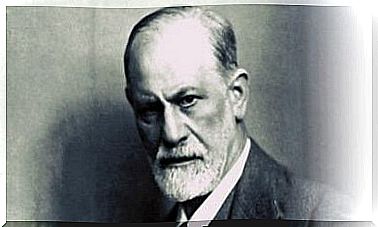Spectator Effect: When No One Helps Anyone In Need

Several years ago, a young woman was stabbed in the middle of the street in a residential area of New York. The young woman died as a result of the wounds. Although this does not happen very often, the news did not get much attention. What got the attention of the press shortly after, however, was the so-called spectator effect.
What happened? Well, the thing is, at least 38 people witnessed the killing, and none of them intervened to try to prevent it. The killer spent more than half an hour killing the young woman, named Kitty Genovese. The incredible thing about this case is that no one helped the young woman. None of the 38 witnesses called the police themselves. All of them observed what was happening, but no one helped.
When people began to look for reasons why they did not help, expressions such as “decadent morality”, “dehumanization in an urban environment”, “alienation” and “existential despair” were heard. Other factors, however, were overlooked at the time.
This case clearly illustrates the phenomenon called the “spectator effect “. The spectator effect, or diffused division of responsibilities, refers to cases where people who testify about a crime do not offer any kind of help to the victims when others are present.
Social psychology has studied this phenomenon a lot. It is a psychological phenomenon that shows that it is less likely that someone will intervene in an emergency situation when there are several people around them.

Why did no one help Kitty Genovese?
A person who witnesses an emergency situation such as stabbing or attempted murder is in conflict. There are ethical and moral rules that say they should help the victim. However, there is also rational and irrational fear of what might happen to the person helping.
Behind all this is the fear of physical harm, having to participate in police matters, embarrassment when other people look at you, as well as other unknown dangers. All of these factors contribute to the likelihood that no one will intervene.
Let’s talk about the factor of being in the presence of other “spectators”. In the case of young Kitty Genovese, every spectator knew that others were watching the horrific crime. But no one knew how the others reacted.
In this way , the responsibility for helping is spread out among all the observers. They all share the blame for not intervening, and they may even believe that someone may have already tried to help or called the police.

The spectator effect does not happen when there is only one person
If there is an emergency, and only one spectator is present, then only this one person can help. Yes, they could choose not to help, but the pressure to intervene is only on them. When, on the other hand, several spectators are present, they share the pressure. What usually happens is that no one helps.
Another reason is that the potential blame is shared among all observers. There is evidence that a person’s moral conduct is not separate from their thoughts of punishment or personal reward.
It is reasonable to assume that in cases where a group of people share the responsibility, the punishment or the guilt of the individual is small or non-existent. The logic is that “Everyone could have acted, so I’m not guilty of not helping”.

Maybe someone has already helped anyway
When there are others present in an emergency, their behavior or reactions can often not be observed. If this is the case, all of them can assume that one of the others has obviously already acted, that someone is helping in some way.
This also dilutes personal responsibility because they believe that their help will be unnecessary or even harmful. Therefore, in a situation where there are spectators whose behavior cannot be observed, each individual can rationalize their lack of action because “someone else is obviously trying to solve the problem”.
The more people there are, the less likely it is that someone will help
This survey leads us to the conclusion that the more spectators there are, the less likely it is that some of them will help. If they actually help, then it will take much longer before they start with it. The spectator effect is a sad, cruel reality of life.
How can we prove this theory? Well, to begin with, an artificial emergency should be set up. Each person involved should not have any communication with the others so that they will not be able to guess each other’s behavior.
Finally, the experiment should give us the opportunity to evaluate the speed of people’s reactions through the emergency. Some previous experiments have already proved this theory.

The spectator effect in our society
We can find the spectator effect in many situations in our daily lives. Unfortunately , the topic of school bullying is very much in focus today. Why do people not help the person being bullied? The spectator effect can at least partly explain this situation, as one of the factors involved is the silence of those who observe.
We can also see the spectator effect in many companies or organizations. It is not uncommon for there to be an unfair wage structure or working conditions. In this situation, the spectator effect can explain why no one does anything to correct it. As we can see, the effect began to stick its awful head in the wake of Kitty Genovese’s murder.
People are more likely not to help in emergencies if there are more people experiencing the incident. It is a shared responsibility among all the spectators. Unfortunately, there are several factors that explain this phenomenon. When we act as just a part of a social group, rather than as a single individual, it is very difficult for us to be of help to anyone. We should be “influencers” instead of being influenced by those around us.
Bibliography
Clay Lindgren, Henry. Introduction to Social Psychology. Trillas, 2003.
Papalia, Dianne. Psychology. Mexico, Mc Graw-Hill, 2003.









